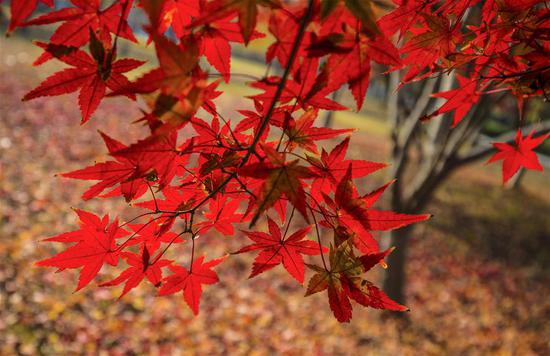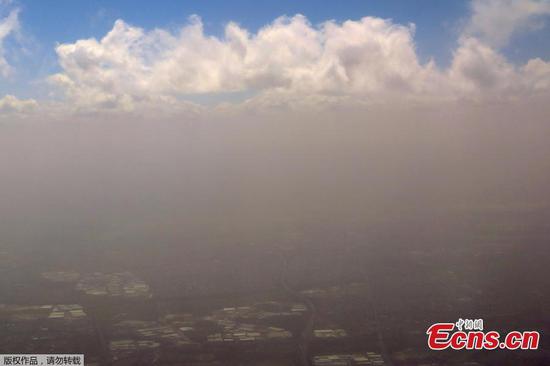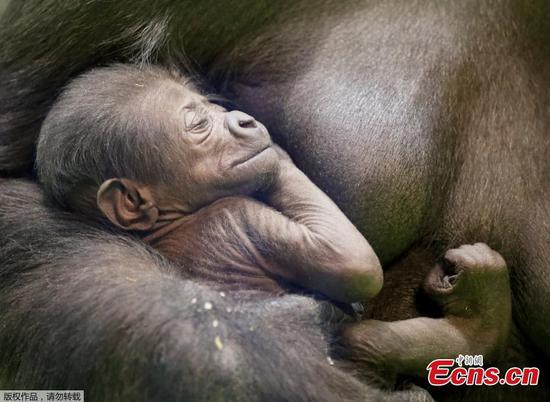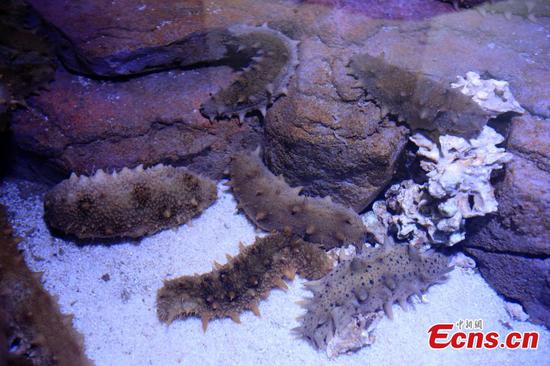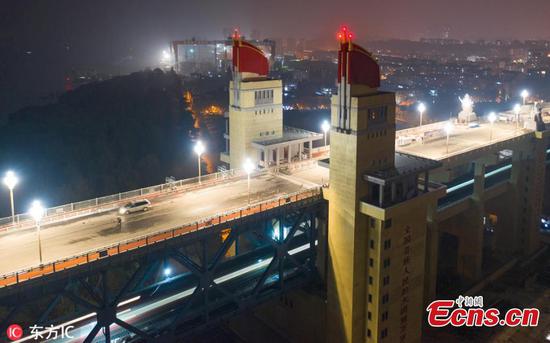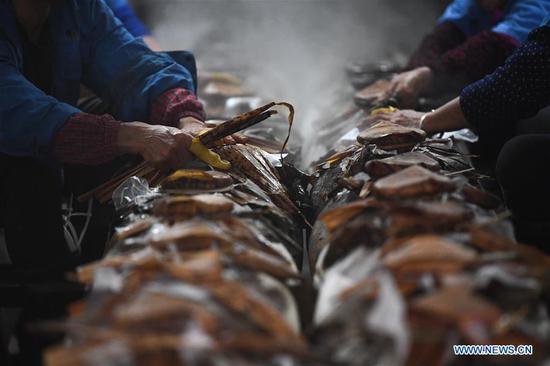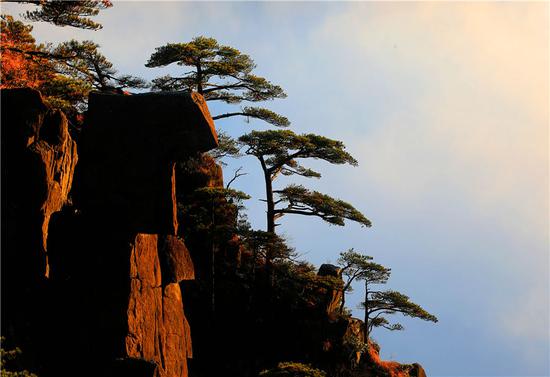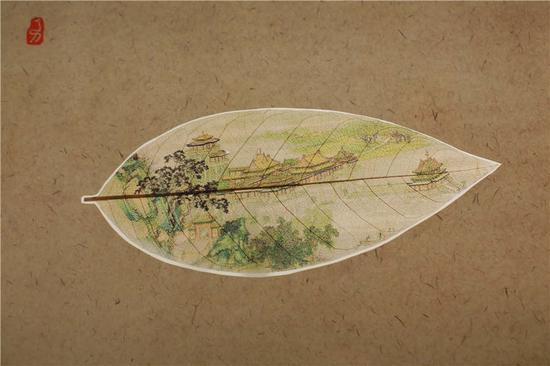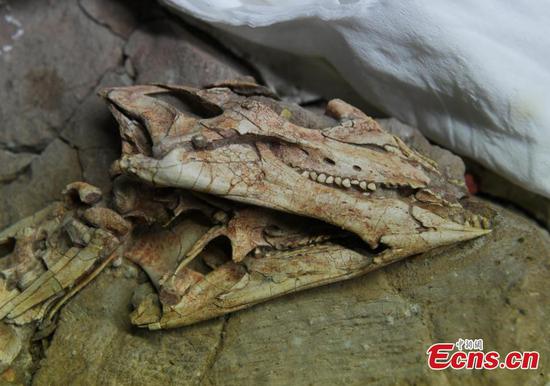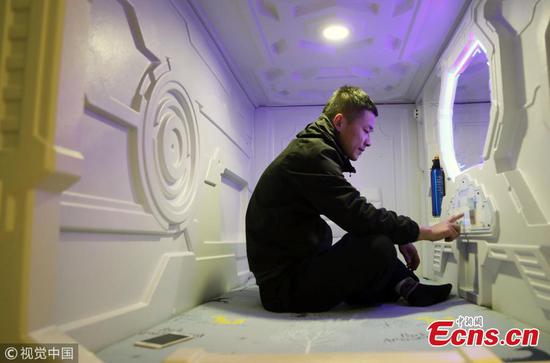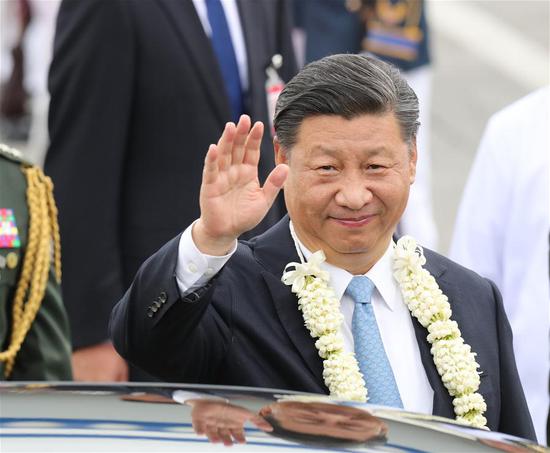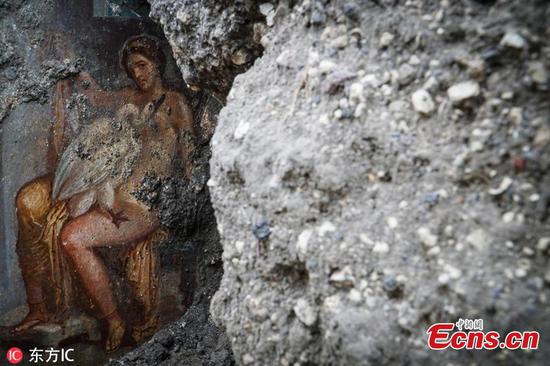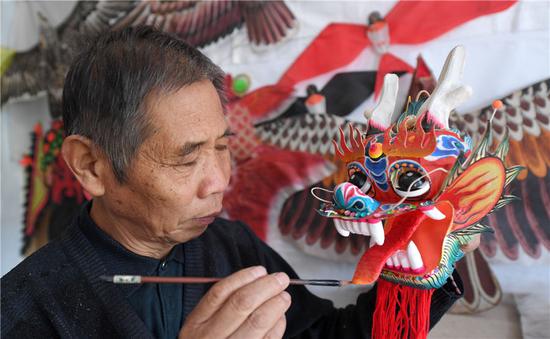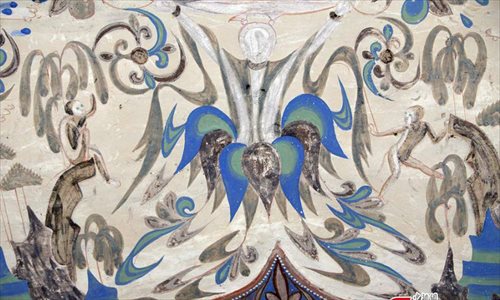
Dunhuang Research Academy has released a series of photos of grotto paintings that depict monkeys to mark 2016 Spring Festival, China's Lunar New Year. According to China's lunar calendar, 2016 was the Year of the Monkey. The academy is an institution responsible for conservation, management and research at the Mogao Grottoes (a World Cultural Heritage site at Dunhuang), the Yulin Grottoes (a nationally protected key cultural heritage site at Guazhou), and the Western Thousand-Buddha Grottoes at Dunhuang. The institution said some wall paintings featuring monkeys had a history of 1,400 years. (Photo/Courtesy of Dunhuang Research Academy)
Chinese scientists said they have successfully applied graphene‐enhanced nanomaterials to protect ancient wall paintings.
A team from the Center for Nano Energy Materials (CNEM) of Northwestern Polytechnical University used a compound of calcium hydroxide and graphene quantum dots in a water solution and applied the material in ancient wall paintings in three tombs of the Tang Dynasty (618-907), Beijing-based Science and Technology Daily (STD) reported Thursday.
"Research shows that the new material is small (an average of 80 nanometers per particle), uniform in size, and very sticky, thus making it good at reinforcing the wall paintings," Wei Bingqing, a CNEM dean told STD.
Carbonate, which commonly exists in ancient murals, is the most easily damaged material, Wei said.
Wei noted that once the calcium hydroxide is applied to the wall painting's surface, a chemical reaction with carbon dioxide to create carbonate enhances the painting.
Calcium hydroxide can even perform better after nanocrystallization with its surface activity and stability largely being enhanced, Wei said.
On the contrary, organic materials that are also widely applied in wall painting protection are less compatible with the painting and can cause them to chalk and turn yellow in the long run, Wei added.
Using nanometer calcium hydroxide to protect wall paintings was proposed by Italian scientists in 2000, after which scientists from around the world tried it for nearly 20 years to find a proper solution to synthesize nanometer calcium hydroxide, Zhu Jinmeng, a research fellow of the CNEM team, told STD.
"But breakthroughs could not be achieved in the size and permeability until today," Zhu said.
Wei said the team would try to develop more and better materials and further promote their use for wall painting protection in China.














